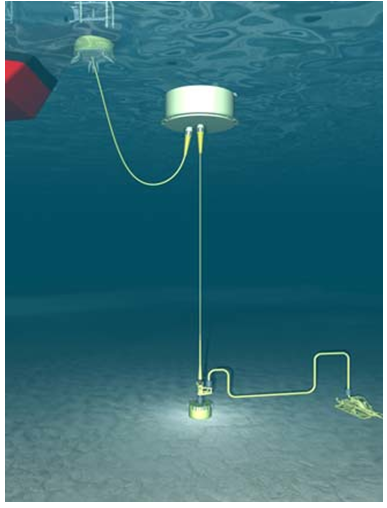NICEFLOW® is used in a wide range of industries across all industry sectors. Once again, LEMMA team has been challenged in many benchmarks to prove that there is no need to have a 30 years old company to get the best results in Off-shore specific sector. NICEFLOW® is now well established as the most full-spectrum and accurate CFD solution, with strong reference on this market.
Our aim is to study here the 3D viscous flow around a vertical cylinder in non linear waves using an explicit incident wave model (SWENSE model developed at École Céntrale de Nantes, France). This method allows to impose spectral incident wave while reflected waves are calculated using a classical RANSE approach. CPU time savings are very important (from 5 to 10) compared to direct wave generation. The drag force exerted on the cylinder by impacting incident waves is calculated along time and post processed using a FFT tool. The wave period is 1.8 s, height 0.237 m and steepness is about 4.6%.
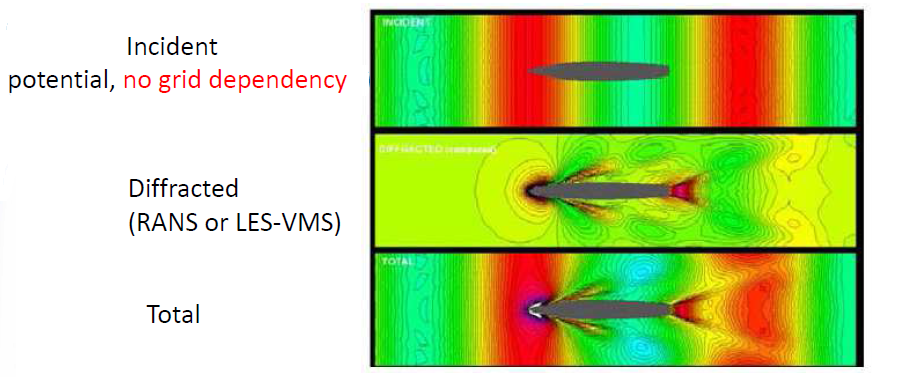
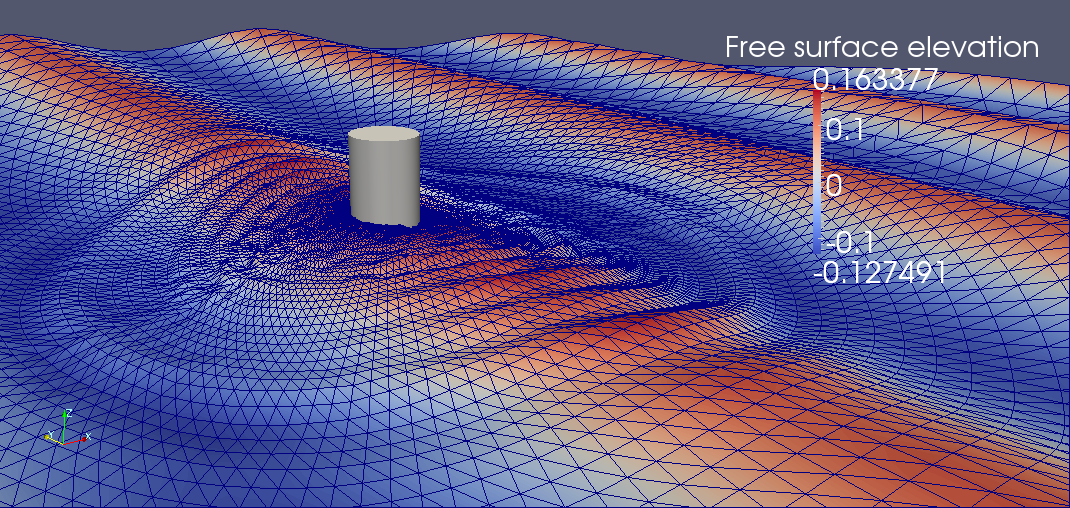
The numerical results are compared with experimental ones (Krokstad & Stanberg, 1995) : the first two harmonics of the drag force are shown on the table below, with a very satisfying agreement.

In this study, our aim is to calculate the induced vibrations and forces applied on a riser of 2 km lenght. Full scale FSI simulation is realized with an optimal structured mesh generated along the riser to accurately capture the physics and transient phenomena. The drag force validation procedure is effective as observed on the figure below where calculations are compared with experimental data on supercritical cylinders at high Reynolds numbers ranging from 5e5 to 1e7. All the calculations are done using LES-VMS turbulence model. For furthers details, see the publication [Minguez & al, OMAE 2011].
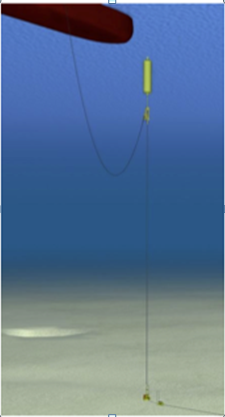
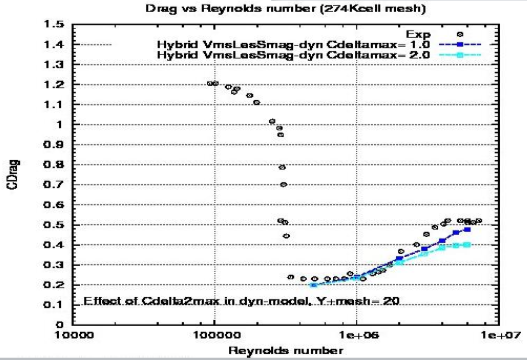
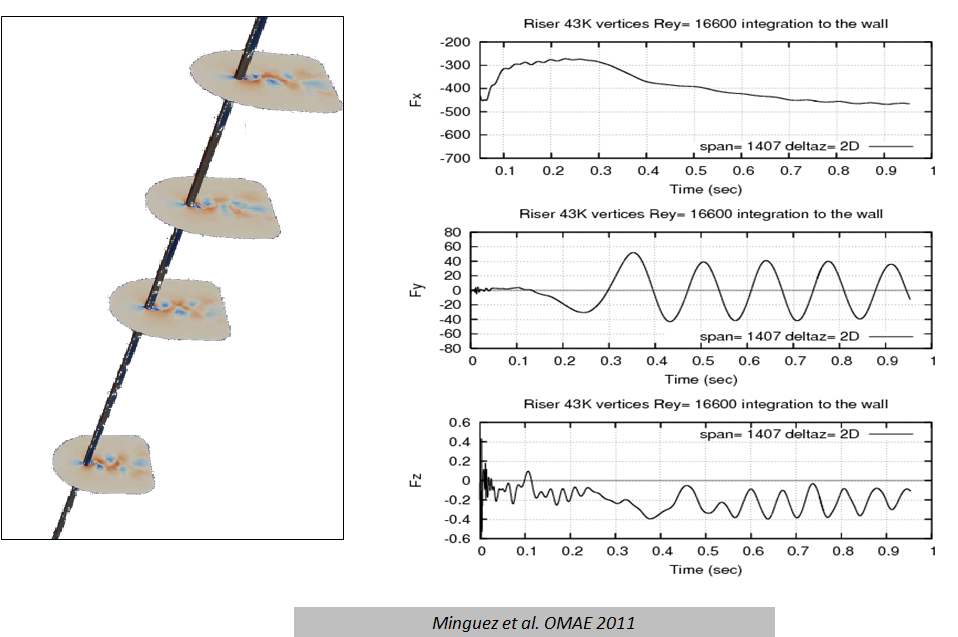
As a beginning and before simulating VIV problems on multiple cylinders, NICEFLOW® is validated on an academic case dealing with the flow around one cylinder at different Reynolds numbers, ranging from 3900 to 20000. These simulations are performed with our hybrid RANS-VMS model and snapshots are showed on the following pictures. This work has been published in [Computers & Fluids, 2011]. Please ask us if you are interested in this work.
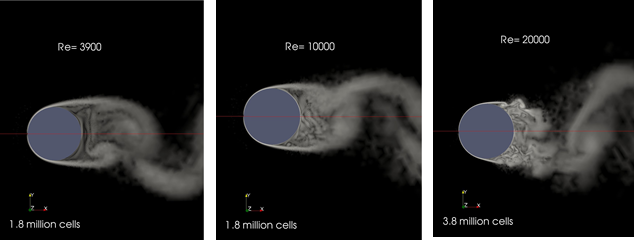
This study has been published in [ Sirnivas & al., OMAE International Conference, 2006]. The aim of this work is to simulate the 3D simulation of a half and full truss spar with all the details, using LES-VMS model and intelligent mesh to accurately capture the wake behind the Spar and forces exerted on it. Comparison with other commercial software is also done as shown below. Whereas competitors seem to meet no better than a 70% margin of error, NICEFLOW® matches the experimental curve !
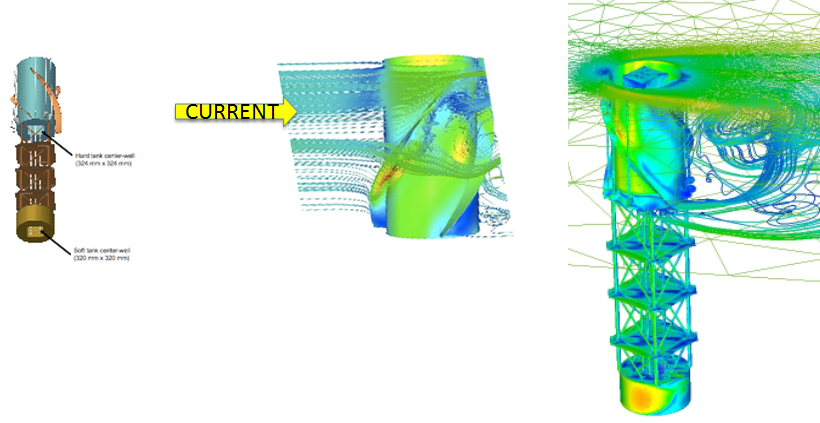
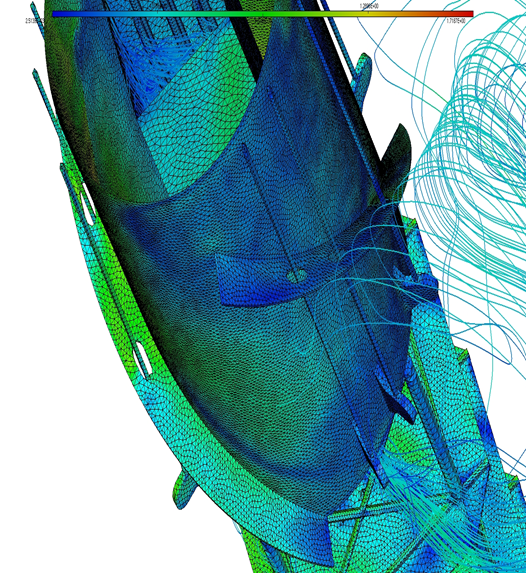
In this benchmark, well-known commercial CFD codes were tested and compared. It was shown that most of them produced numerical results within 60% to 100% errors when compared with experimental data. As you can see below on the following picture, it was not the case with NICEFLOW® software, that gave the best answer on this benchmark problem within an error less than 20% for all the considered cases.
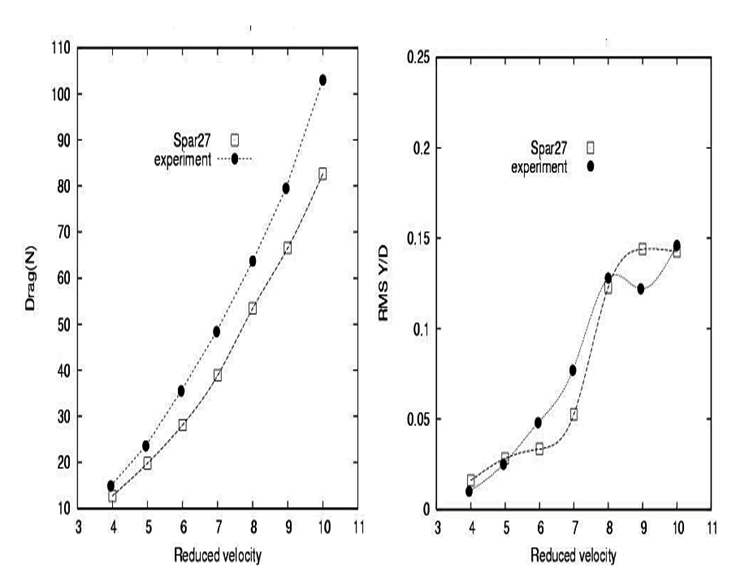
This work was published by [Vivet & al, OMAE 2011]. It deals with the vibration of a flat buoy in a current, where different CFD well-known commercial codes and NICEFLOW®) results are compared and analyzed. Note that high order numeric allow us to reduce drastically numerical diffusion as it can be seen on the pictures and curves below. Main results and snapshots of this study are summarized below.
